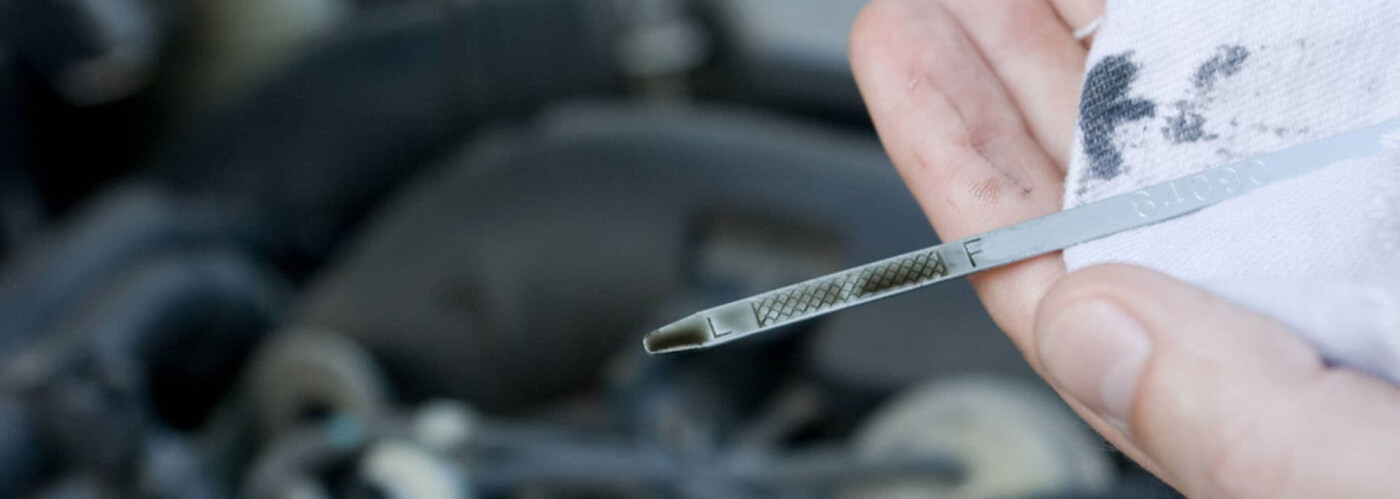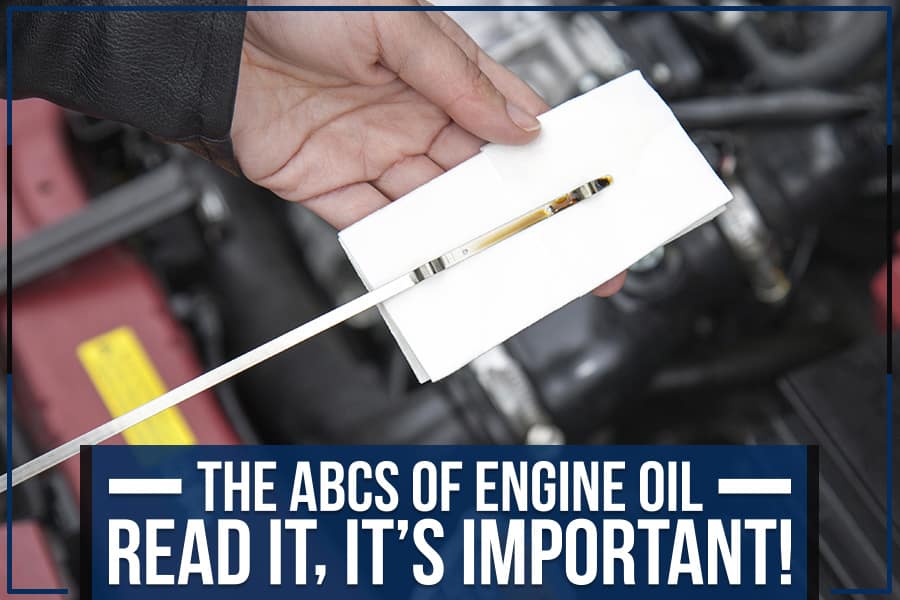- Jeep Cherokee Push Button Start Not Working: Troubleshooting Tips To Get You Back on the Road Fast! - 11 November 2023
- Haval H2 Problems: The Complete Troubleshooting Guide - 11 November 2023
- Gwm P Series Problems: Troubleshooting Guide for Common Issues - 11 November 2023
If there is no oil on the dipstick, you need to add at least one quart of oil immediately. This can prevent further damage to the engine and ensure optimal performance.
It is essential to check the oil level regularly to maintain the proper functioning of your vehicle. Neglecting to add oil can lead to engine wear and potential engine failure. Keep an eye out for any leaks or damage to the oil filter or oil pan, as these can cause the oil level to drop.
Additionally, degraded seals may also result in oil seepage. Make sure to address any underlying issues to prevent low oil levels in the future.
Understanding The Importance Of Oil On Dipstick
If you find no oil on the dipstick, it is important to add at least one quart of oil immediately to prevent engine damage. Checking for oil leaks and addressing any other issues is also recommended to ensure proper oil levels.
The dipstick is a small but crucial component of your vehicle’s engine. It allows you to check the oil level, ensuring that the engine is well lubricated and operating smoothly. Understanding the importance of oil on the dipstick is essential for maintaining the functionality and longevity of your engine.
Exploring The Role Of Oil In The Engine
Oil plays a vital role in keeping your engine running smoothly and preventing excessive wear and tear. It acts as a lubricant, reducing friction between the moving parts of the engine. Additionally, oil helps to cool down the engine by absorbing heat generated during the combustion process.
Without sufficient oil, the engine’s components can grind against each other, causing friction and heat buildup. This can lead to severe damage, including engine seizing and potential breakdowns. Therefore, monitoring the oil level on the dipstick is crucial.
Significance Of Proper Oil Levels For Engine Functionality
Maintaining proper oil levels is essential for ensuring the functionality of your engine. When the oil level is too low, it can result in inadequate lubrication, leading to increased friction and wear on crucial engine components. This can result in decreased performance, reduced fuel efficiency, and even engine failure.
On the other hand, excessive oil levels can also cause problems. When there is too much oil in the engine, it can result in foaming and air entrainment, compromising the lubrication process. Proper oil levels help to maintain the engine’s efficiency and prevent potential damage caused by oil-related issues.
What To Do If No Oil On Dipstick
If you find that there is no oil on the dipstick, immediate action is required. It indicates that your engine is running with inadequate lubrication, which can lead to severe damage. To rectify this situation, follow these steps:
- Add at least one quart of oil to the engine.
- Check the oil level again using the dipstick to ensure it is within the recommended range.
- If the oil level is still not registering on the dipstick, add more oil as necessary.
- Monitor the oil level regularly and top up as needed to maintain proper lubrication.
Remember, it is important to use the right type and viscosity of oil recommended by your vehicle manufacturer for optimal engine performance. Proper oil maintenance is crucial in preventing costly repairs and ensuring your engine’s longevity.
Identifying The Indication Of No Oil On Dipstick
If there is no oil on the dipstick, it is important to add at least one quart of oil immediately to prevent damage to the engine. Check the oil level and add more if necessary until it reaches the appropriate level on the dipstick.
Take action as soon as possible to avoid further complications.
How To Check Oil Levels Using The Dipstick
- Park your vehicle on level ground and wait for the engine to cool down.
- Locate the dipstick, which is usually a long, thin metal rod with a handle attached to it.
- Pull out the dipstick from its tube and wipe it clean using a rag or paper towel.
- Insert the dipstick back into the tube fully and then pull it out again.
- Observe the markings or holes on the dipstick, which indicate the proper oil level.
- Check the oil coating on the dipstick. It should be clear and not too thick or gritty.
What It Means If There Is No Oil Showing On The Dipstick
- The oil level is too low and needs to be topped up.
- There is a leak in the oil system, causing the oil to drain out.
- The oil has been consumed or burned by the engine, requiring an oil change.
What To Do If There Is No Oil Showing On The Dipstick
- Add at least one quart of oil to bring the levels back up.
- Check the dipstick again to ensure the oil level is within the recommended range.
- If the oil still does not reach the markings on the dipstick, add more oil as needed until it does.
- Once the oil level is back to the proper range, start your engine and let it run for a few minutes.
- After running the engine, turn it off and wait for a few minutes to allow the oil to settle.
- Check the oil level once again to make sure it is within the recommended range.
Possible Causes For No Oil On Dipstick
If there is no oil on the dipstick, it is important to add at least one quart of oil immediately to prevent damage to the engine. Check for any oil leaks and ensure the proper oil level is maintained to avoid further issues.
Analyzing Potential Reasons For Low Or No Oil Levels
If you find that there is no oil on the dipstick when checking your vehicle’s oil level, it is crucial to take immediate action. Without proper lubrication, your engine can suffer severe damage and potentially lead to costly repairs. There are several potential causes for low or no oil on the dipstick, so let’s dive into some common issues that could be leading to oil loss in your engine.Common Issues Leading To Oil Loss In The Engine
1. Leaking oil: One of the most common causes for low oil levels is an oil leak. Whether it’s from a damaged seal, gasket, or even a small crack in the engine block, oil can escape and lead to a decrease in oil levels. It’s important to visually inspect your engine for any signs of oil leaks and have them repaired as soon as possible.2. Burning oil: If you notice that your vehicle is consuming more oil than usual, it could be a sign of burning oil. This can occur due to worn-out piston rings or valve seals, causing oil to leak into the combustion chamber and burn along with the fuel. Regularly checking and replacing your vehicle’s spark plugs can help you identify if burning oil is the issue.3. Incorrect oil change: Another possible reason for low oil levels could be an improper oil change. If the oil filter wasn’t replaced or tightened correctly, or if the wrong viscosity oil was used, it can lead to oil leakage. Always ensure that you follow the manufacturer’s guidelines for oil changes and use the recommended oil type and filter.4. Oil pump failure: The oil pump plays a vital role in circulating the oil throughout the engine. If the oil pump fails or becomes clogged, it can result in low oil pressure and inadequate lubrication. Regular maintenance and timely replacement of the oil pump can help prevent this issue.5. Overheating: Excessive heat can cause oil to evaporate, leading to lower oil levels. This can occur due to a malfunctioning cooling system, such as a failing radiator, thermostat, or water pump. It’s essential to keep your vehicle’s cooling system in proper working condition to prevent overheating and subsequent oil loss.Remember, if you find no oil on the dipstick, it’s crucial to take immediate action and address the underlying cause. Adding oil to bring the level within the recommended range is the first step. However, it’s equally important to identify and resolve the root cause of the low oil levels to prevent further damage to your engine. Regular maintenance, including oil changes and inspections, can help keep your engine running smoothly and reduce the chances of encountering this issue.Essential Steps To Take If No Oil On Dipstick
When it comes to maintaining your vehicle, checking the oil level regularly is crucial. However, if you find that there is no oil on the dipstick, it’s important to take immediate action to prevent any potential damage to your engine. In this article, we will discuss the essential steps you need to take if you find no oil on the dipstick.
Adding The Necessary Amount Of Oil To Reach The Appropriate Level
Adding the necessary amount of oil is the first step to ensure your engine has enough lubrication. According to experts, when the oil doesn’t reach inside the markings or holes on the dipstick, you need to add at least one quart of oil. This will help bring the oil level up to the appropriate level.
Proper Procedure And Precautions For Adding Oil
When adding oil, it’s important to follow the proper procedure and take some precautions to ensure everything is done correctly. Here’s a step-by-step guide:
- Make sure your vehicle is parked on a level surface and the engine is turned off.
- Locate the oil filler cap on the top of your engine. It is usually labeled “Oil” and may have an oil can icon.
- Remove the oil filler cap and set it aside in a safe place.
- Using a funnel, slowly pour the appropriate amount of oil into the oil filler hole. Refer to your vehicle’s owner’s manual or consult a professional if you are unsure about the recommended amount.
- After adding the oil, wait for a few minutes to allow it to settle in the oil pan.
- Insert the dipstick back into the dipstick tube completely.
- Remove the dipstick and check the oil level. The oil should now be within the acceptable range on the dipstick.
- If the oil level is still low, add a small amount of oil at a time until it reaches the appropriate level. Be cautious not to overfill.
- Replace the oil filler cap and make sure it is securely tightened.
By following these proper procedures and precautions when adding oil, you can ensure that your engine receives the necessary lubrication and prevent any further damage.
In conclusion, if you find no oil on the dipstick, it is important to take immediate action. Add the necessary amount of oil to reach the appropriate level, following the proper procedure and precautions. Checking your oil level regularly and addressing any issues promptly will help keep your engine running smoothly and prevent potential damage.
Checking For Oil Leaks And Other Issues
If there is no oil on the dipstick, it is important to add at least one quart of oil immediately. This helps prevent further damage to the engine and ensures it is properly lubricated. Check for any oil leaks and other issues to ensure the engine’s health.
Inspecting The Engine For Oil Leaks
One possible reason for not finding any oil on the dipstick could be due to oil leaks. Inspecting the engine for oil leaks is crucial to identifying and addressing any issues that might be causing low or no oil on the dipstick. When checking for oil leaks, follow these steps:
- Start by visually inspecting the engine for any visible signs of oil leaks. Look for puddles or stains underneath the vehicle or around the engine components.
- Next, check the oil filter and drain plug to ensure they are securely tightened. Loose or damaged parts can cause oil leaks.
- Inspect the valve cover gasket and oil pan gasket for any signs of oil leakage. These gaskets can wear out over time and result in oil leaks.
- Check the oil filler cap to ensure it is properly sealed. A loose or damaged cap can lead to oil leaks.
- If you are unable to identify any visible oil leaks, consider using UV dye. Add the dye to the engine oil and run the engine for a short period. Then, use a UV light to check for any fluorescent traces of oil, which can indicate hidden leaks.
Addressing Potential Issues Leading To Low Or No Oil On Dipstick
There are several potential issues that might lead to low or no oil on the dipstick. To address these issues, follow the steps outlined below:
Potential Issues
Issue 1: Incorrect Oil Level Or Type
Start by ensuring that the oil level and type are correct for your specific vehicle. Refer to the manufacturer’s manual or consult with a professional mechanic to determine the appropriate oil level and type. If needed, add the recommended amount of oil to the engine.
Issue 2: Oil Consumption Or Burning
Excessive oil consumption or burning can result in low or no oil on the dipstick. To address this issue, consider the following:
- Check for any blue or gray smoke coming from the exhaust pipe, as this can indicate oil burning.
- Inspect the piston rings, valve seals, and cylinder walls for any damage or wear that might be causing oil consumption.
- If necessary, consult with a professional mechanic to diagnose and repair any issues related to oil consumption or burning.
Issue 3: Oil Filter Or Oil Pump Problems
Faulty oil filters or oil pumps can restrict the flow of oil to the engine and lead to low oil levels. To address this issue:
- Check the oil filter for any clogs or signs of damage. Replace the filter if necessary.
- Inspect the oil pump for any malfunctions or blockages that might be hindering proper oil circulation.
- If you suspect a problem with the oil filter or pump, it is recommended to consult with a professional mechanic for further inspection and repair.
Issue 4: Internal Engine Problems
In some cases, internal engine problems can cause oil consumption or leaks. If you suspect internal engine issues, it is best to seek professional help from a qualified mechanic. They can diagnose and repair any internal engine problems that might be causing low or no oil on the dipstick.
By inspecting the engine for oil leaks and addressing potential issues, you can ensure that your vehicle’s oil levels are maintained properly, preventing further damage to the engine.

Credit: www.nissanofgreenville.com
Frequently Asked Questions Of What To Do If No Oil On Dipstick
Does No Oil On Dipstick Mean No Oil In Engine?
If there is no oil on the dipstick, it does not necessarily mean that there is no oil in the engine. However, it indicates that there might not be enough oil. To avoid further damage, add at least one quart of oil immediately until it reaches the appropriate level on the dipstick.
Can I Drive With Low Oil On Dipstick?
If there is low oil on the dipstick, it is not recommended to drive. Driving with low oil can cause premature engine wear and potentially lead to engine failure. Add at least one quart of oil if the dipstick doesn’t show the oil level.
Why Is My Car Showing No Oil?
If your car is showing no oil on the dipstick, it means that the engine is running low on oil. You should add at least one quart of oil immediately to prevent engine damage. It is important to check and maintain the oil level regularly to keep your car running smoothly.
How Long Does It Take For Oil To Show Up On Dipstick?
It takes only a few seconds for the oil to show up on the dipstick once it has settled in the oil pan.
Q: What Should I Do If There Is No Oil On The Dipstick?
A: If the dipstick is not showing any oil, add at least one quart of oil immediately.
Conclusion
If you find no oil on the dipstick, it is essential to take immediate action. Adding at least one quart of oil is necessary if the oil level is not reaching the markings or holes on the dipstick. Ignoring this can cause severe damage to your engine.
So be proactive and check and add oil as needed to ensure the smooth running of your vehicle.


